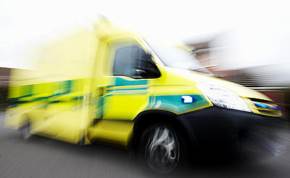
A recent court case, not in our region, found the driver of an ambulance guilty of causing death by dangerous driving after they neglected to properly secure a patient to the trolley-cot in their ambulance.
The patient was thrown across the ambulance when the vehicle left the road and subsequently died as a result of head injuries caused by the road traffic incident. The driver of the vehicle was sentenced to 150 hours of unpaid work, banned from driving for 12 months, placed under an 18 month community order, ordered to pay £1,000, and they lost their job.
It is important that you are aware of your responsibilities in securing and transporting persons travelling in the rear saloon.
It is the Trust’s responsibility to:
It is your responsibility to:
Remember the driver is responsible for the safety of the passengers and the load.
The Trust has released an operational instruction (OI 145) which covers this in more detail, including some guidance on using the restraints (Pegasus MK2), which you can download here. Some ‘safety whilst travelling’ guidance has also been produced, which covers attending the patient, securing other occupants, and securing equipment and luggage. You can view a copy here.
Published 19th February, 2016